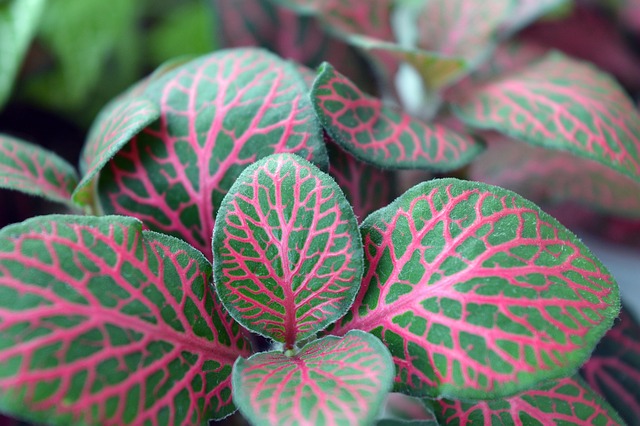Plant rotation, a key strategy for long-term plant care, involves rearranging plants in your garden over time to improve soil health, prevent nutrient depletion, and deter pests. By moving plants to fresh soil, you replenish nutrients, minimize pest buildup, and ensure optimal growth conditions. This sustainable practice not only maintains the vibrancy of your garden but also fosters ecological balance and plant health. Regular rotation offers both health benefits and aesthetic advantages, creating diverse microclimates that benefit various species at different stages, adding variety and visual interest throughout the seasons.
Maintaining a lush, vibrant garden requires strategic planning, especially when considering long-term plant care. One effective approach gaining traction is plant rotation—a systematic method of rearranging plants to ensure optimal growth and aesthetic appeal over time. This article explores the benefits and strategies behind this practice, offering insights into how regular plant rotation can enhance your green space’s health and visual allure throughout the seasons. From understanding the basics to expert tips, we’ll guide you in creating a thriving garden ecosystem.
Understanding Plant Rotation: A Strategic Approach to Long-Term Care
Plant rotation is a strategic approach to long-term plant care that involves systematically changing the location or arrangement of plants in a garden or landscape over time. This method is not just about visual aesthetics; it’s a highly effective way to maintain soil health, prevent nutrient depletion, and deter pests and diseases. By diversifying plant locations, you create new microclimates that benefit different species at various stages of their life cycles.
This rotation strategy ensures that plants receive the optimal conditions they need for healthy growth. For instance, moving annuals or fast-growing perennials to fresh soil can help replenish nutrients and minimize the buildup of pests and diseases that may have accumulated over time in a particular spot. This thoughtful approach not only keeps your garden vibrant and visually appealing but also promotes ecological balance and the long-term health of your plants.
Benefits of Regular Rotation for Optimal Plant Health and Aesthetics
Regular plant rotation offers numerous advantages for both the health and aesthetic appeal of your greenery over the long-term plant care journey. By moving plants around in a strategic manner, you can provide them with fresh nutrients from different soil sources, reducing the risk of nutrient depletion that often occurs in static locations. This practice also stimulates roots to grow more extensively, encouraging robust plant development.
Visually, rotating plants creates interest and adds variety to your landscape or interior space. It allows for a dynamic display, ensuring no single area becomes dominant, and encourages balanced growth. Moreover, regular rotation can help prevent pest and disease outbreaks by interrupting the life cycle of insects and pathogens that thrive in stagnant environments.
Implementing a Comprehensive Plant Rotation Plan
Implementing a comprehensive plant rotation plan is key to ensuring long-term plant care and maintaining a vibrant, ever-changing aesthetic in any outdoor space or garden. By strategically moving plants around on a regular basis, you can promote healthy growth, prevent soil depletion, and create visual interest throughout the seasons. This method involves considering factors such as sunlight exposure, water needs, and compatibility between plant species.
A well-designed rotation plan addresses these aspects, ensuring each plant receives the optimal conditions for its specific needs. For example, moving shade-loving plants to sunnier spots during the summer months allows them to thrive while providing opportunities for sun-worshipping varieties to flourish in cooler, shadier areas come fall and winter. This continuous cycle fosters a dynamic and resilient garden ecosystem that not only looks stunning but also thrives over time.
Expert Tips for Sustaining Vibrant Green Spaces Through Seasonal Changes
Maintaining vibrant green spaces through seasonal changes requires a strategic approach to long-term plant care. Expert horticulturists recommend rotating plants annually to ensure they receive the right nutrients and sunlight exposure, promoting healthy growth and blooming. By understanding each plant’s specific needs and preferences, you can create a balanced ecosystem that thrives even as seasons shift.
For instance, during spring, cool-season plants like tulips and daffodils flourish, while summer brings out the best in heat-loving varieties such as petunias and zinnias. Autumn offers opportunities to plant trees and shrubs that display vibrant colors, and winter is ideal for preparing beds and introducing cold-hardy perennials. Regular rotation not only enhances aesthetic appeal but also fosters robust, diverse plant communities that can better withstand environmental challenges.
Plant rotation services are not just about seasonal changes; they’re a strategic, long-term plant care approach that fosters vibrant aesthetics and optimal health. By understanding the benefits of regular rotation and implementing a comprehensive plan, you can sustain lush green spaces year-round. Expert tips emphasize the importance of tailored strategies, addressing specific needs, and staying attuned to nature’s cycles—all key to achieving and maintaining a stunning outdoor environment.
